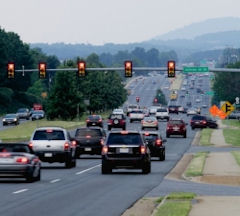 Spending $197 million to complete construction of the Charlottesville Bypass would do nothing to improve traffic congestion along the bypassed three-mile stretch of U.S. 29 north of Charlottesville, and it would induce development and traffic growth north of the South Fork of the Rivanna River, making traffic conditions there worse than they are already.
Spending $197 million to complete construction of the Charlottesville Bypass would do nothing to improve traffic congestion along the bypassed three-mile stretch of U.S. 29 north of Charlottesville, and it would induce development and traffic growth north of the South Fork of the Rivanna River, making traffic conditions there worse than they are already.
Those are among the conclusions of a review of official Virginia Department of Transportation traffic forecasts for the Charlottesville Bypass by Norman Marshall, a Vermont-based traffic engineering consultant hired by the Southern Environmental Law Center. The SELC issued a press release and released Marshall’s report earlier this afternoon.
Marshall based his analysis on a 1990 VDOT report on the grounds that, despite its flaws, the research was more comprehensive and authoritative than more recent updates. Even if the bypass is built, the Level of Service on the bypassed portion of U.S. 29 would remain an F, Marshall notes. Thus, the putative benefits of the project would accrue not to local drivers but to thru traffic — trucks and motorists passing through the Charlottesville area to another destination.
What the 1990 VDOT study doesn’t take into account is the phenomenon of “induced demand,” says Marshall. The bypass would tie into U.S. 29 just north of the South Fork of the Rivanna River, an area that has seen considerable development since the study. There are already nine traffic lights on a 6-mile stretch north of the river with proposals for three more. In 2003, Albemarle County approved construction of another 3,000 residential units plus 3 million square feet of commercial space in that area, much of which has yet to be built. In the meantime, there is increasing development further north in Greene County, where many people live and use U.S. 29 to drive to work in Charlottesville.
Writes Marshall: “If the 29 bypass makes travel to and from areas in Albemarle and Greene Counties in the greater Route 29 corridor more accessible, it will encourage both residential and commercial development in those areas. This increased development will cause increased traffic volumes, again partially offsetting any benefit of the project.”
Marshall says that VDOT should analyze alternative investments, such as grade-separated intersections at Rio Road, Hydraulic Road and Greenbrier Drive as well as other other elements listed in the Places29 master plan.
I have asked VDOT for a response, which I will append to this post if I receive one.
— JAB


